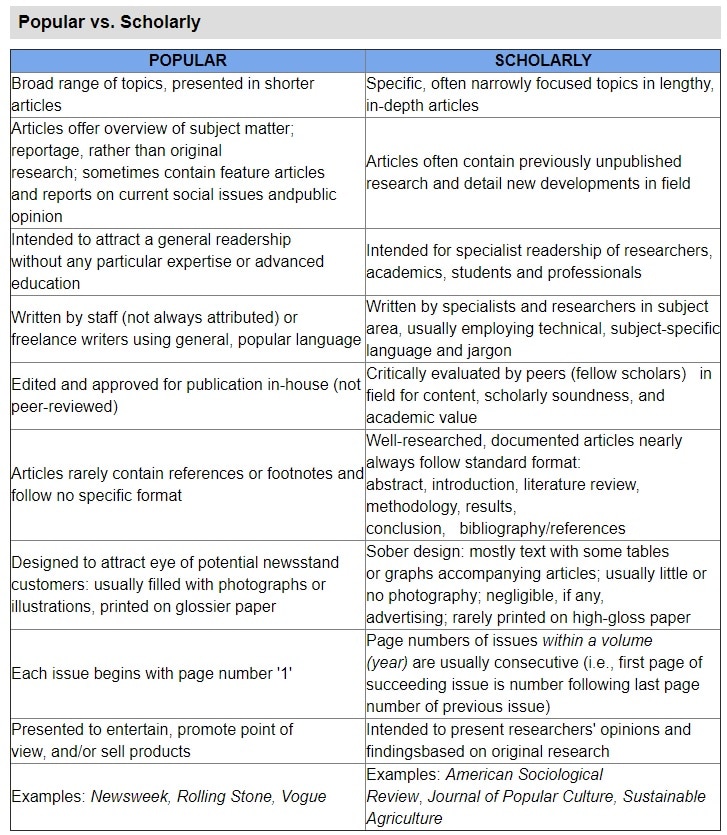
The Information Life Cycle
Because of the information life cycle, where you look for information depends in large part on when it happened. For reasons of public interest, technology, and economics, information moves through society at a somewhat predictable pace.
Why?
A news team can film something happening, send it back to the station, edit it, package it, and then broadcast it on the news in a matter of hours. If the event is newsworthy, then newspapers and magazines can arrange to have coverage or commentary about the event appear in the next day’s, week’s, or month’s issue. It takes longer for something to appear in a scholarly journal because those sources publish less frequently and because the information therein typically includes in-depth analysis. Finally, books and encyclopedias take even longer to write, edit, and publish. The general rule is that the longer it takes for the source to appear, the more in-depth the coverage will be. Note, however, that encyclopedias provide general overviews, and therefore are meant only to introduce you to the topic.
A Caveat!
The internet extends the timeline. Webpages or blogs can be edited and/or uploaded hourly but may contain information from any point in the past or present. Even if the information is newly uploaded, it may be old information that reflects only what was known at the time of its creation. An excellent use for such sources is to provide social or historical context to your research.
What’s The Difference Between Popular Magazines and Scholarly Journals?
Popular press sources are in the business of providing entertaining and popular content because doing so ensures greater ad revenues. Thus, it makes sense for them to appeal to run content that appeals to a large number of readers and/or viewers. Scholarly journals are much less dependent on advertisers and are therefore able to run articles that are of interest to smaller or more specialized audiences. Aside from these economic considerations, there are a number of differences. UC Santa Cruz Library provides this summary:

This chart created by UCSC Library @ https://guides.library.ucsc.edu/distinguish-between-popular-and-scholarly-journals.
For more information about the differences between academic and popular presses, you may want to follow these links:
Alabama University’s Ask A Librarian Page
Royal Roads University Library
Georgetown University Library
NCSU Library also includes information about Trade Journals
Samuel Cohen’s insightful “Scholarly Publishing’s Last Stand: When university presses close so do our minds” appeared in the Chronicle of Higher Education and offers a thorough and sobering look at the state of academic publishing.
Use this information to inform your research practices. Not only does when something happened dictate where you will find information about it, the quality (and ultimate purpose) of the sources you encounter will dictate how much credence you give the information therein. Keep these things in mind as you create your research process.
What Your Research Process Might Look Like
If you have been given the task of writing a research paper about President George H.W. Bush’s efforts to convince the American public that the 1991 Iraq War was a worthwhile endeavor, you might consider consulting the following sources:
Preliminary Reading
Encyclopedia Britannica entries:
Iraq and the war of 1991
George Herbert Walker Bush
Saddam Hussein
Kuwait
An Internet Search:
(advertising OR marketing OR public relations) AND (Gulf War OR Iraq War 1991)
Deeper Reading
EBSCOHost and JSTOR searches for full-text, peer-reviewed journals:
(advertising OR marketing OR public relations) AND (Gulf War OR Iraq War 1991)
The Library’s Online Catalog:
Iraq War 1991 and mass media
Contextual Research
A YouTube.com search:
Desert Storm AND Gulf War 1991
Newspaper or Magazine Archives in Microfiche/Microfilm or online databases:
Scanning the dates October 1990 to February 1991 for examples of new stories, ads, and editorials to determine the “mood” of the time.
All of these sources come from different time periods and contain information from different points in the information life cycle. Understanding how they all fit together to for a complete picture is part of information literacy.
